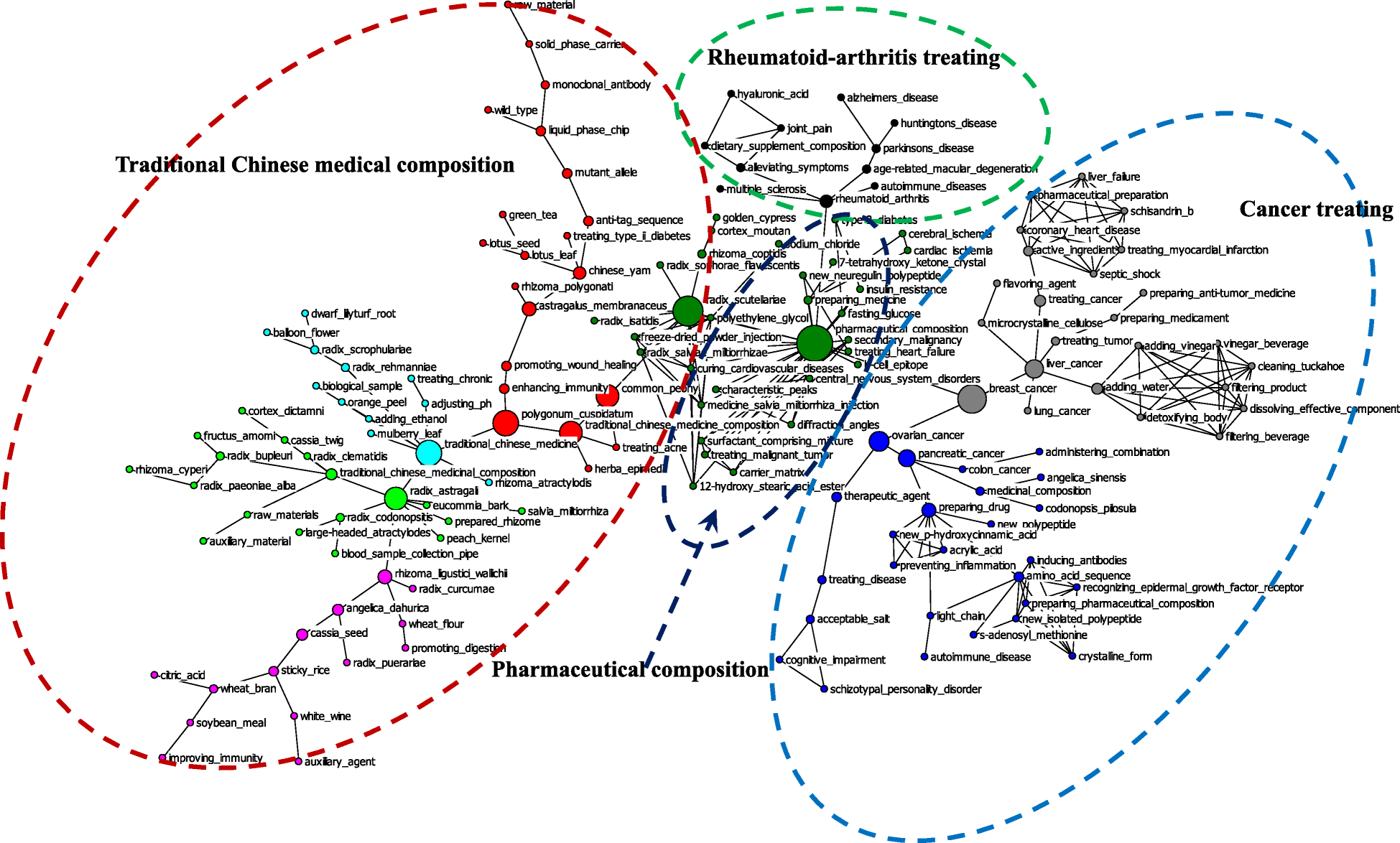With its rapidly growing economy, massive population, and increasing focus on healthcare, China has set its sights on becoming a world leader in pharmaceutical innovation. However, this journey is not without its challenges. In this comprehensive article, we’ll explore the obstacles and opportunities that define Chinese pharmaceutical innovation, and how the industry is working to overcome barriers and capitalize on its unique advantages.
The Current State of Chinese Pharmaceutical Innovation
Before we dive into the specifics, let’s take a moment to assess where China stands in the global pharmaceutical landscape. The country has made significant strides in recent years, but there’s still a long way to go before it can truly compete with established pharmaceutical powerhouses like the United States and Europe.
A Rising Star in the Global Pharma Scene
China’s pharmaceutical industry has been growing at an impressive rate. According to McKinsey & Company, the country’s biopharmaceutical ecosystem is experiencing a momentous shift from a formerly generics-focused play into one that nurtures innovation[1]. This transformation has profound implications for both patients and industry peers worldwide.
“China’s biopharmaceutical ecosystem is experiencing a momentous shift from a formerly generics-focused play into one that nurtures innovation, with profound implications for patients and industry peers.”[1]
Key Indicators of Progress
To understand how China’s biopharma innovation ecosystem is evolving, McKinsey maintains the China Drug Innovation Index (CDII). This index gauges five dimensions that support healthy biopharma innovation:
- Policy environment (regulatory reforms and market access policies)
- Funding
- Research and development (R&D) capability
- Local innovation output
- Integration with global markets
The CDII shows that China has made significant improvements across these dimensions, particularly in local innovation output and global integration[1].
Obstacles Facing Chinese Pharmaceutical Innovation
Despite the progress, Chinese pharmaceutical innovation faces several significant challenges. Let’s explore these obstacles in detail.
Academic Constraints
One of the primary hurdles in Chinese pharmaceutical innovation is the academic environment. While China produces a large number of STEM graduates each year, there’s often a disconnect between academic research and practical industry applications.
Lack of Industry-Academia Collaboration
Unlike in countries like the United States, where universities and pharmaceutical companies often work closely together, China’s academic institutions and pharmaceutical industry have traditionally operated in separate spheres. This lack of collaboration can hinder the translation of basic research into marketable drugs.
Focus on Quantity Over Quality in Research Output
There’s also been a tendency in Chinese academia to prioritize the quantity of research papers over their quality or practical applicability. This can result in a wealth of published research that doesn’t necessarily translate into innovative drug development.
Industrial Challenges
The Chinese pharmaceutical industry itself faces several obstacles in its quest for innovation.
Historical Focus on Generics
Historically, China’s pharmaceutical industry has been heavily focused on producing generic drugs. While this has been profitable and has helped make medicines more accessible to the Chinese population, it hasn’t fostered a culture of innovation.
Lack of Experience in Novel Drug Development
As a result of the focus on generics, many Chinese pharmaceutical companies lack experience in developing novel drugs. The process of discovering, developing, and bringing a new drug to market is complex and requires a different set of skills and resources than producing generics.
Institutional Barriers
Institutional factors also play a role in hindering pharmaceutical innovation in China.
Regulatory Hurdles
While China has made significant strides in streamlining its drug approval process, regulatory hurdles still exist. The approval process for new drugs can be lengthy and complex, which can discourage innovation.
Intellectual Property Protection Concerns
Concerns about intellectual property protection have historically been a major issue in China. While the situation has improved in recent years, some pharmaceutical companies still worry about the safety of their intellectual property when operating in China.
Financial Constraints
Finally, financial factors can pose obstacles to pharmaceutical innovation in China.
High Costs of R&D
Developing a new drug is an expensive process, often costing billions of dollars. While China has a large and growing economy, many Chinese pharmaceutical companies still struggle to allocate the necessary resources for extensive R&D programs.
Risk-Averse Investment Culture
There’s also been a tendency towards risk aversion in Chinese investment culture. Given the high failure rate in drug development, this can make it challenging for innovative pharmaceutical startups to secure the funding they need.
Opportunities in Chinese Pharmaceutical Innovation
Despite these challenges, China’s pharmaceutical industry also enjoys several unique advantages and opportunities. Let’s explore these in detail.
Growing Pharmaceutical Market
One of the most significant opportunities for Chinese pharmaceutical innovation lies in the country’s massive and growing market for medicines.
Large Population Base
With a population of over 1.4 billion people, China represents an enormous potential market for pharmaceuticals. This large population base provides a strong incentive for both domestic and international companies to invest in drug development tailored to Chinese patients.
Rising Middle Class and Increasing Healthcare Spending
China’s rapidly growing middle class is driving increased healthcare spending. According to Atradius, domestic demand will be boosted by a growing middle class that can afford high value-added drugs[3]. This trend creates a fertile ground for innovative pharmaceutical products.
Government Support and Funding
The Chinese government has recognized the importance of pharmaceutical innovation and is taking steps to support the industry.
Increased R&D Funding
The government has significantly increased funding for pharmaceutical R&D. This financial support is crucial for fostering innovation in the industry.
“Pharmaceutical investments in China are forecast to increase by 7% annually in 2024 and 2025. The government strongly supports investment and R&D in order to shift away from producing generics and towards high quality drugs and biopharmaceutical innovations.”[3]
Regulatory Reforms
China has implemented several regulatory reforms to streamline the drug approval process and encourage innovation. For instance, the National Medical Products Administration (NMPA) has introduced priority reviews, conditional approvals, and a new channel for breakthrough therapies[1].
Unique Research Opportunities
China’s unique characteristics provide several opportunities for pharmaceutical research.
Diverse Patient Population
China’s large and diverse population offers unique opportunities for clinical trials. The country’s genetic diversity and the presence of diseases that are rare in Western countries can provide valuable data for drug development.
Traditional Chinese Medicine
The rich tradition of Chinese medicine represents another potential source of innovation. By combining modern pharmaceutical techniques with traditional knowledge, Chinese researchers may be able to develop novel treatments.
International Collaboration
Despite geopolitical tensions, there are still significant opportunities for international collaboration in pharmaceutical innovation.
Partnerships with Multinational Pharmaceutical Companies
Many multinational pharmaceutical companies are eager to tap into China’s market and research capabilities. These partnerships can provide Chinese companies with valuable expertise and resources.
Global Talent Pool
China has been actively working to attract international talent in the pharmaceutical industry. This influx of global expertise can help drive innovation and bridge gaps in experience.
Strategies for Overcoming Obstacles and Capitalizing on Opportunities
Given these obstacles and opportunities, what strategies can Chinese pharmaceutical companies and policymakers adopt to foster innovation? Let’s explore some key approaches.
Fostering a Culture of Innovation
One of the most crucial steps is to cultivate a culture that values and rewards innovation.
Encouraging Risk-Taking
Chinese pharmaceutical companies need to embrace a culture that encourages calculated risk-taking. This might involve setting up innovation incubators within larger companies or providing incentives for employees to pursue novel ideas.
Promoting Collaboration
Fostering collaboration between academia and industry is crucial. This could involve setting up joint research programs, encouraging academic researchers to spend time in industry settings, and vice versa.
Investing in R&D Infrastructure
Continued investment in R&D infrastructure is essential for driving pharmaceutical innovation.
State-of-the-Art Research Facilities
Chinese pharmaceutical companies and research institutions should invest in cutting-edge research facilities. This includes not just physical infrastructure, but also advanced technologies like artificial intelligence and machine learning that can accelerate drug discovery.
Talent Development
Investing in talent development is crucial. This includes not just training in scientific and technical skills, but also in areas like project management and regulatory affairs that are essential for bringing new drugs to market.
Leveraging China’s Unique Advantages
Chinese pharmaceutical companies should look for ways to leverage the country’s unique advantages.
Focusing on China-Specific Diseases
There’s an opportunity to focus on developing treatments for diseases that are particularly prevalent in China. This not only addresses important health needs but also provides a competitive advantage in the domestic market.
Integrating Traditional Chinese Medicine
Finding ways to integrate insights from traditional Chinese medicine into modern drug development could lead to novel treatments. This approach has already yielded some successes, such as the development of artemisinin for malaria treatment.
Enhancing International Collaboration
While geopolitical tensions pose challenges, enhancing international collaboration remains crucial for advancing pharmaceutical innovation.
Strengthening Intellectual Property Protection
Continuing to strengthen intellectual property protection can help attract more international partnerships. This includes not just improving laws, but also their enforcement.
Participating in Global Research Networks
Chinese researchers and companies should actively participate in global research networks. This can involve joining international research consortia, participating in global clinical trials, and contributing to open science initiatives.
The Future of Chinese Pharmaceutical Innovation
As we look to the future, what can we expect from Chinese pharmaceutical innovation? While predicting the future is always challenging, several trends seem likely to shape the industry in the coming years.
Continued Growth and Investment
All signs point to continued growth and investment in China’s pharmaceutical sector. According to Atradius, Chinese pharmaceuticals production is expected to grow by 7.7% in 2024 and by 6.1% in 2025[3]. This growth is likely to be accompanied by increased investment in R&D and innovation.
Emergence of Global Chinese Pharma Companies
We’re likely to see the emergence of more Chinese pharmaceutical companies as global players. As McKinsey notes, a small number of China-based biotechs are poised to become global biopharma companies, characterized by globally competitive innovation, extensive value chain capabilities, a global culture, and robust funding[1].
Increased Focus on Precision Medicine
Given China’s large population and genetic diversity, we’re likely to see an increased focus on precision medicine. This approach, which tailors medical treatment to individual patient characteristics, could be a significant area of innovation for Chinese pharmaceutical companies.
Advancements in Biopharmaceuticals
China is making significant strides in biopharmaceuticals, particularly in areas like antibody-drug conjugates (ADCs) for cancer treatment. We can expect to see continued innovation in this field, leveraging China’s strengths in chemistry, biology, and bioengineering[5].
Key Takeaways
As we conclude our exploration of obstacles and opportunities in Chinese pharmaceutical innovation, let’s recap the key points:
- China’s pharmaceutical industry is undergoing a significant transformation, shifting from a focus on generics to innovative drug development.
- Major obstacles include academic constraints, industrial challenges, institutional barriers, and financial constraints.
- Significant opportunities arise from China’s growing pharmaceutical market, government support, unique research opportunities, and potential for international collaboration.
- Strategies for success include fostering a culture of innovation, investing in R&D infrastructure, leveraging China’s unique advantages, and enhancing international collaboration.
- The future of Chinese pharmaceutical innovation looks promising, with continued growth, the emergence of global Chinese pharma companies, and advancements in areas like precision medicine and biopharmaceuticals.
As China continues to navigate these obstacles and capitalize on its opportunities, it’s poised to play an increasingly important role in global pharmaceutical innovation. The journey won’t be without challenges, but the potential rewards – both for China and for global health – are immense.
FAQs
- Q: How does China’s pharmaceutical industry compare to other major markets like the US and Europe?
A: While China’s pharmaceutical industry has made significant strides, it still lags behind the US and Europe in terms of innovative drug development. However, China is rapidly catching up, particularly in areas like biopharmaceuticals and precision medicine. - Q: What role does the Chinese government play in pharmaceutical innovation?
A: The Chinese government plays a crucial role by providing funding for R&D, implementing regulatory reforms to streamline drug approvals, and creating policies that encourage innovation. The government’s support is a key driver of growth in the sector. - Q: How is traditional Chinese medicine influencing modern pharmaceutical innovation in China?
A: Traditional Chinese medicine provides a unique knowledge base that Chinese researchers are exploring for potential new drug discoveries. By combining traditional wisdom with modern scientific methods, researchers hope to develop novel treatments. - Q: What are some of the most promising areas of pharmaceutical innovation in China?
A: Some of the most promising areas include biopharmaceuticals (particularly in oncology), precision medicine, and treatments for diseases that are prevalent in China. There’s also significant innovation happening in drug delivery systems and the application of AI to drug discovery. - Q: How are international collaborations shaping Chinese pharmaceutical innovation?
A: International collaborations are crucial for Chinese pharmaceutical innovation. They provide access to global expertise, resources, and markets. Many Chinese companies are forming partnerships with multinational pharmaceutical companies, while also attracting international talent to work in China.
Sources Cited:
- McKinsey & Company. “The dawn of China biopharma innovation.” 2021.
- Atradius. “Industry Trends Pharmaceuticals September 2024.” 2024.
- McKinsey & Company. “What can we expect in China in the year of the dragon?” 2024.






















